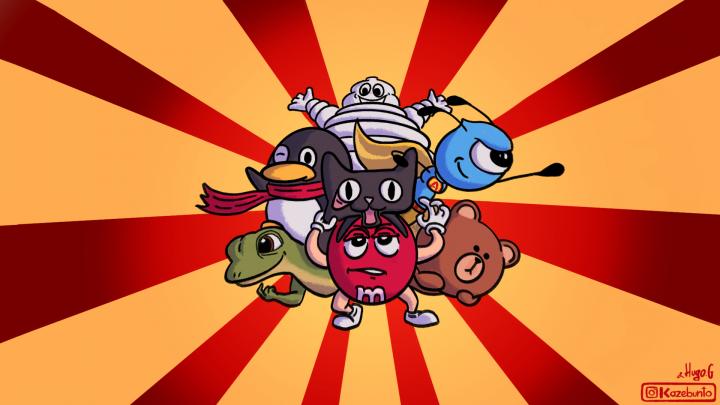

Curious about branding mascots? For sports enthusiasts, mascots from leagues like the NBA or MLB might be the first to pop into mind. However, the world of mascots extends beyond sports. Picture the iconic 2008 Beijing Olympics mascots, The Fuwa. Explore the fascinating realm of branding mascots and discover their impact beyond the sports industry.

The 2008 Beijing Olympics mascots: The Fuwa
Explore the diverse world of branding mascots—objects, people, or animals adopted by groups to symbolize luck or represent organizations like schools, societies, sports teams, or the military. Team mascots often mirror team nicknames, especially when animals are involved, lending them humanlike traits. Even for abstract names, creating a mascot with symbolic meanings is a common practice. Witness the significance in the Olympics, where the mascots represent popular Chinese animals, each with a unique meaning. In sports, mascots extend beyond symbolism, serving merchandising purposes. Uncover the impactful role of branding mascots in various sectors.
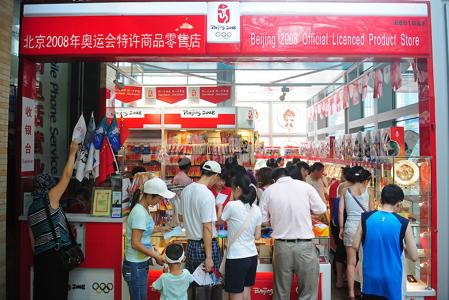
Beijing 2008 Olympic merchandise store. Source: Mark J Rebilas
Just as the sport industry use the mascot for economic purposes (and maybe to bring luck), business firms do make a great use of mascots as well, though not limited to only selling merchandise. As we’ll see mascots also hold a great branding power, having the ability to catch the attention easily.
Discover the influential role of branding mascots as companies leverage these fictional characters to anchor lasting brand awareness. Notable examples include the iconic Michelin Man (created in 1898), symbolizing the tire manufacturing giant Michelin, and Mr. Clean (created in 1958), whose bold presence has set the company’s cleaning products apart in a fiercely competitive market. Additionally, meet the Green Giant (1928), designed to promote a groundbreaking variety of “big peas,” propelling the brand to prominence as one of the world’s leading canned-vegetable companies. Uncover how these branding mascots have become integral to the success of renowned companies over time.
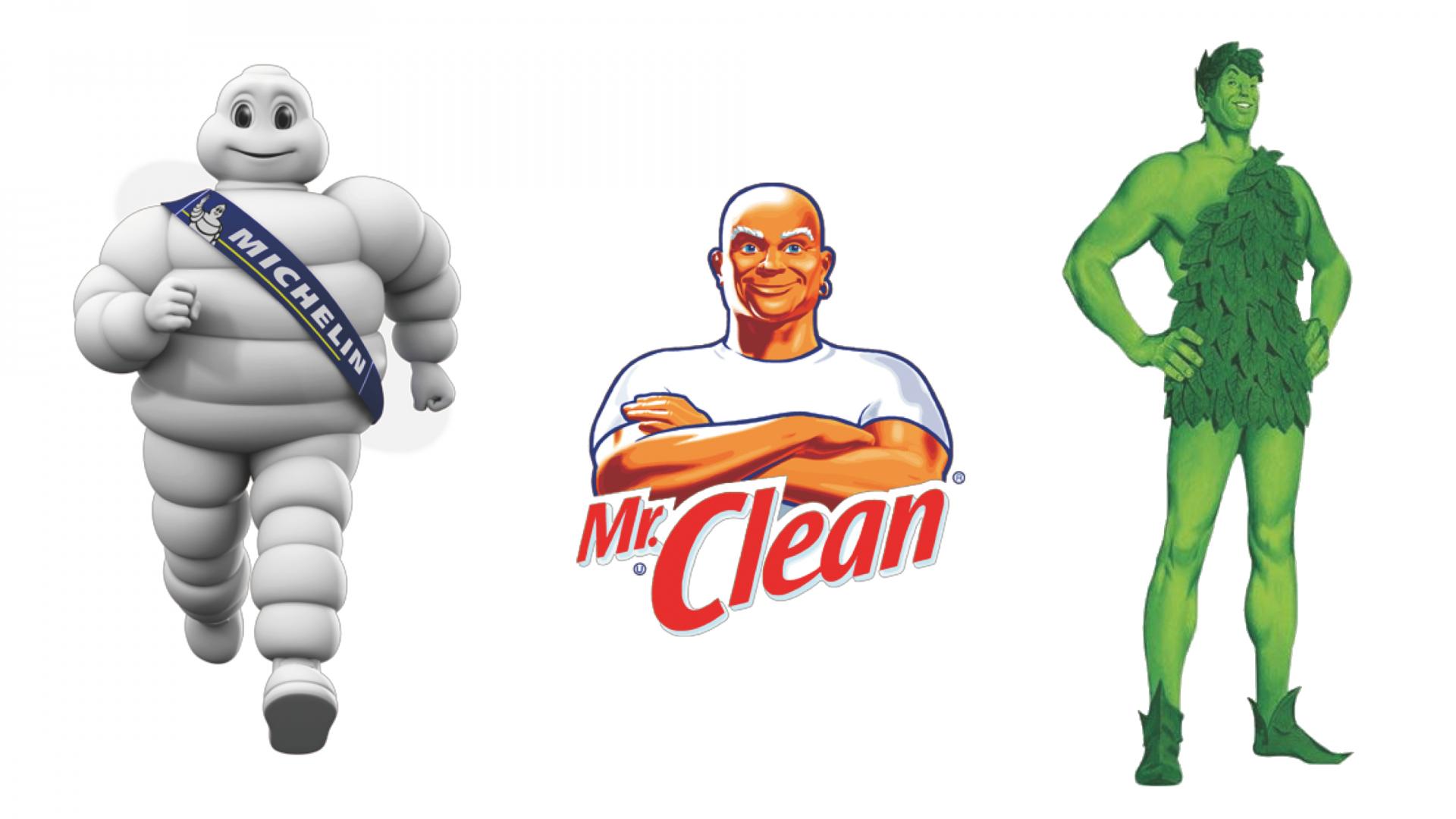
Michelin Man, Mr. Clean and the Jolly Green Giant
In the fast-moving consumer goods (FMCG) market, brand mascots play a pivotal role in showcasing product benefits and fostering consumer connections. Advertising a product becomes challenging without a charismatic spokesperson, making brand mascots invaluable proxies for presenting brand values and personality. These mascots go beyond merely highlighting product features; they create an emotional bond between consumers and the brand. In today’s commoditized market, relying solely on a product’s merits may not guarantee success. Humans are visual communicators, and well-crafted mascots can enhance engagement and communication across various platforms. Explore how branding mascots elevate consumer product sectors, particularly in the dynamic FMCG market.
Take M&M’s as an example. The M&M’s candies were created by Forrest Mars, one of the iconic forces behind the Mars Company empire, as a duplicate of the British candy: Smarties. M&Ms were invented right before the Second World War and was a US army exclusive good.
After the war, they were back on the private market. As a move to push the product into the mainstream, they decided to add faces to their chocolate: one for a red M&M, representing the milk chocolate kind, and one for the yellow M&M, the peanut-chocolate one.
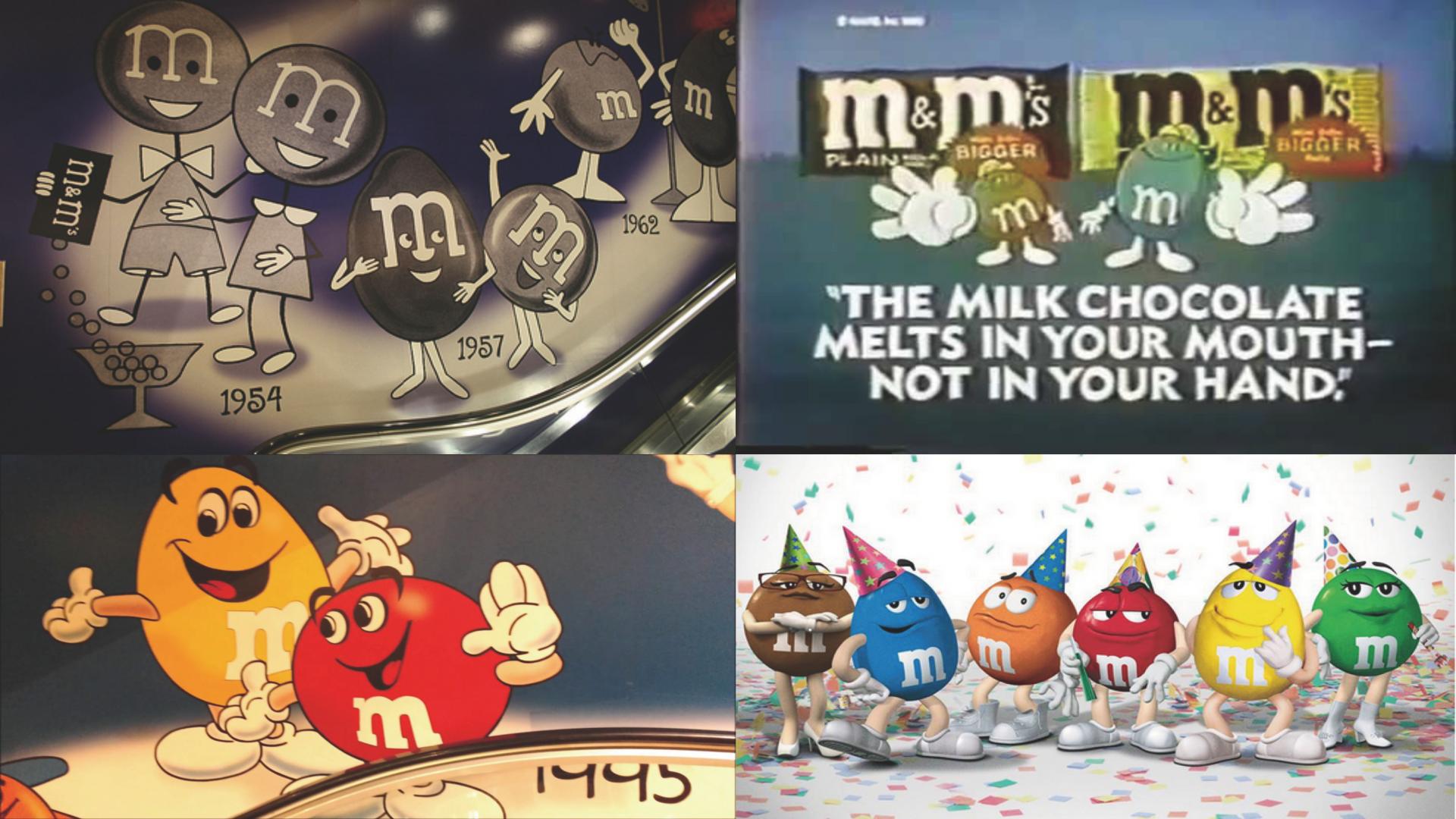
Evolution of M&M’s mascots, from the 50s to today. Source: Youtube-Lucky Lion Bear, M&M’s Twitter
This move proved to be successful: everywhere on TV we could see the two jumping around and dive into chocolate pools, dancing in a Willy-Wonka-like land. The kids loved it. It conveyed joy and fun, and that’s how they’ll remember the product. It appealed to them and it helped differentiate themselves from other candy brands. The company grew and by the late 80s, they were already introduced to Australia, Europe, Canada, Japan, Hong-Kong and the UK.
Bringing mascots to a product has since become the norm for snack and confectionary companies (e.g.: Haribo, Cheetos, Nesquik…), as it required relatively minimal effort but brought great result as it resonated well with younger consumers.But of course, mascots are not just limited to snack and confectionary brands. Other companies also tailor their own mascots to fit their brand narratives and give them distinct personalities to captivate consumers attention in unique ways.
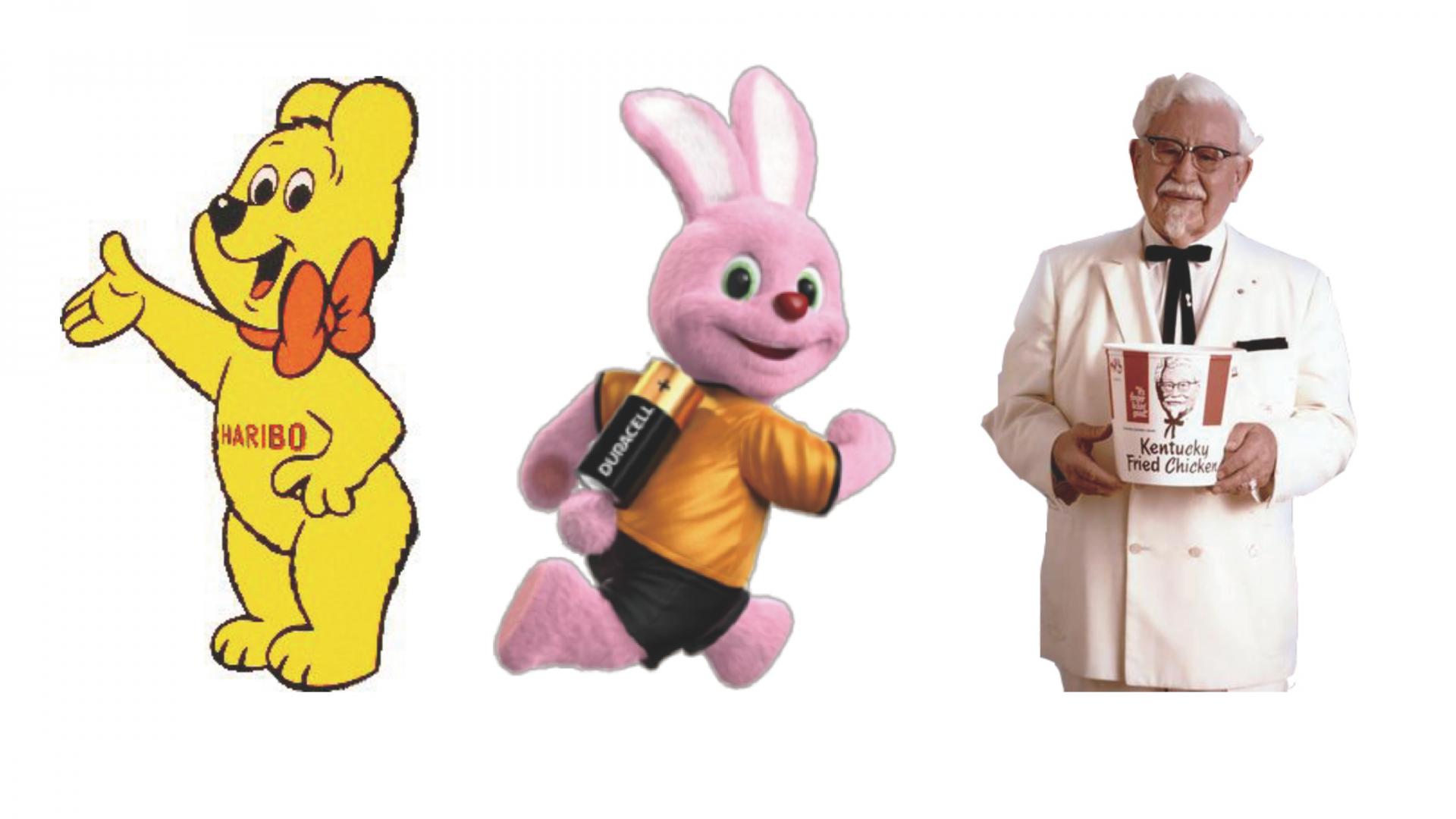
Haribo’s Bear, Duracell Battery Bunny, KFC Colonel Sanders
Adding human characteristics through mascots breathes life to your brand. Having a story or a narrative to your mascots engages the audience and makes for a more profound connection. This can be applied for any products.
By the late 90s, M&M’s sales started to flatline. As more snack and candy alternatives continue to flood the market, competition became harsh. Mars decided to hire the brand consultancy to help rejuvenate the M&M’s brand. Their idea was simple yet ingenious: give these candies a distinct personality. Red was sarcastic and cynical, Yellow was laid-back and gullible: the duo appeared everywhere on TV, Internet and now often appear on Super Bowl advertisements. Each advertisement is often accompanied by a celebrity and showcased these characters’ daily funny and weird life. The characters have such likeable and relatable personalities that made them connect with the audience, even the adults. This marketing move revived the brand and made them it so popular that they now have M&M’s “museums” called “M&M’s World”. In these flagship stores, we see more of these “Spokescandies” displayed around than the actual M&M’s products.
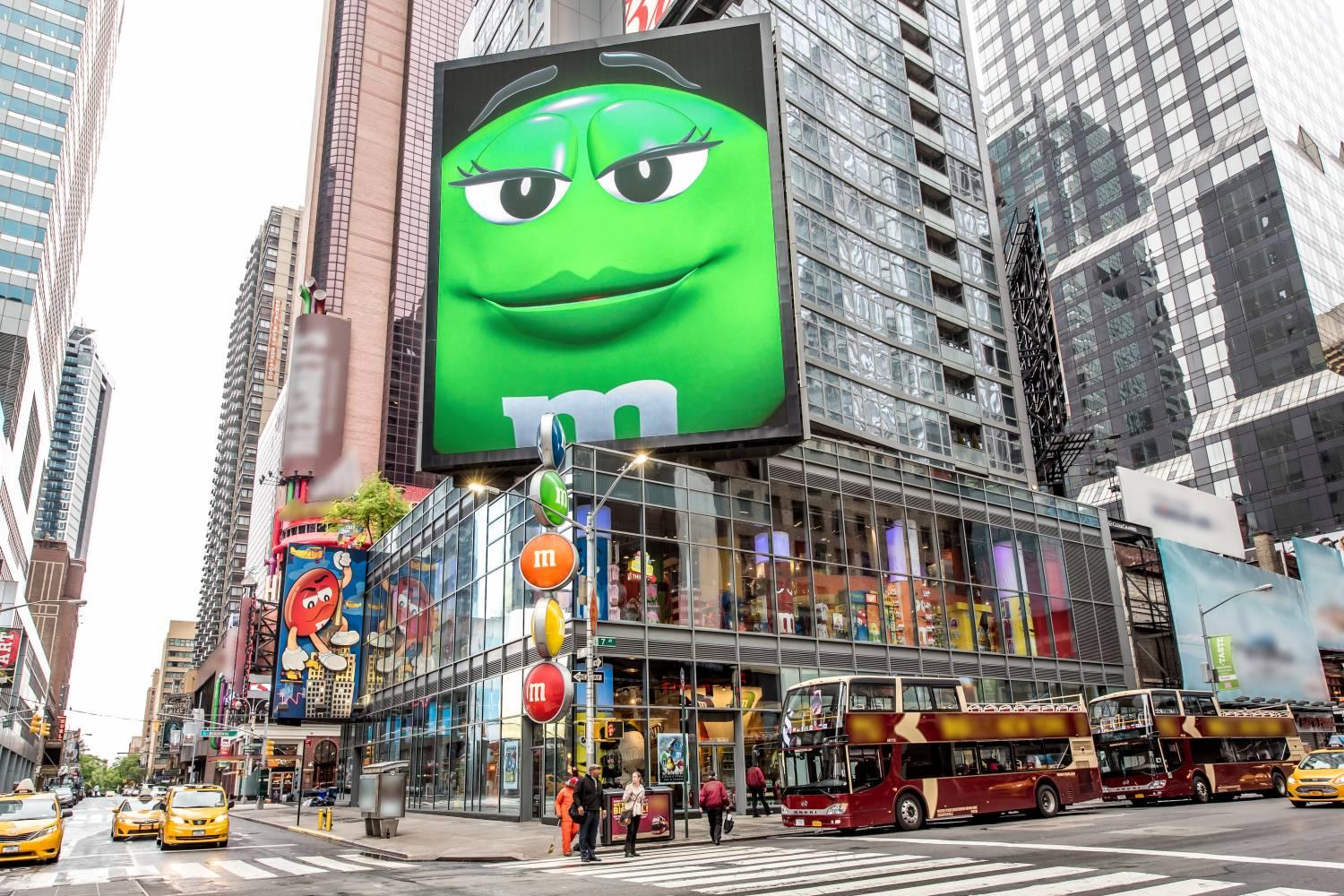
M&M’s World in Time Square. Source: NYC GO
While mascots in the consumer goods market are mostly utilized to bring flair to the brand’s marketing communication as well as to create a more amiable and emotionally resonant image with the audience, the use of mascots in the service sector is more to communicate the value propositions of the brand.
Some services is complex and are difficult to understand, such as insurances, IT, finance management. Therefore, consumers aren’t as sensitive to the differences between firms offering the same service. This also means increased difficulty for brands to remain in the consumers’ top-of-mind. This is when mascots can play a big role in differentiating your brand from the others.
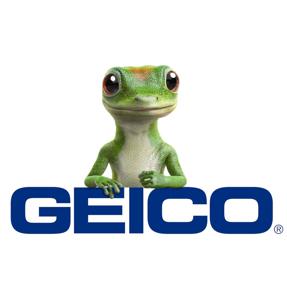
Geico’s Gecko, one of the most recognizable brand mascots today
China’s service sector is growing exponentially, especially in the digital space. An interesting observation is that many Chinese tech firms seem to believe in the power of employing mascots to “represent” their businesses. Most notably, animal mascots seem to be the default choice of use. And to say that Chinese businesses love animal mascots is an understatement. Here’s a list of example of tech companies with animal mascots: QQ, the popular instant messaging app, has a winking penguin with a scarf; T-Mall, Alibaba’s B2C e-shop, has a cute cat with a weird T-shaped head; Meituan, a food delivery app similar to Uber Eats, has a dashing Kangaroo; Ant Financials, an Alibaba sub-branch that manages Alipay (Digital paying service) and provides financial services, has a one-eyed blue ant; Ctrip, a travel agency, has a C-shaped dolphin. And the list goes on.
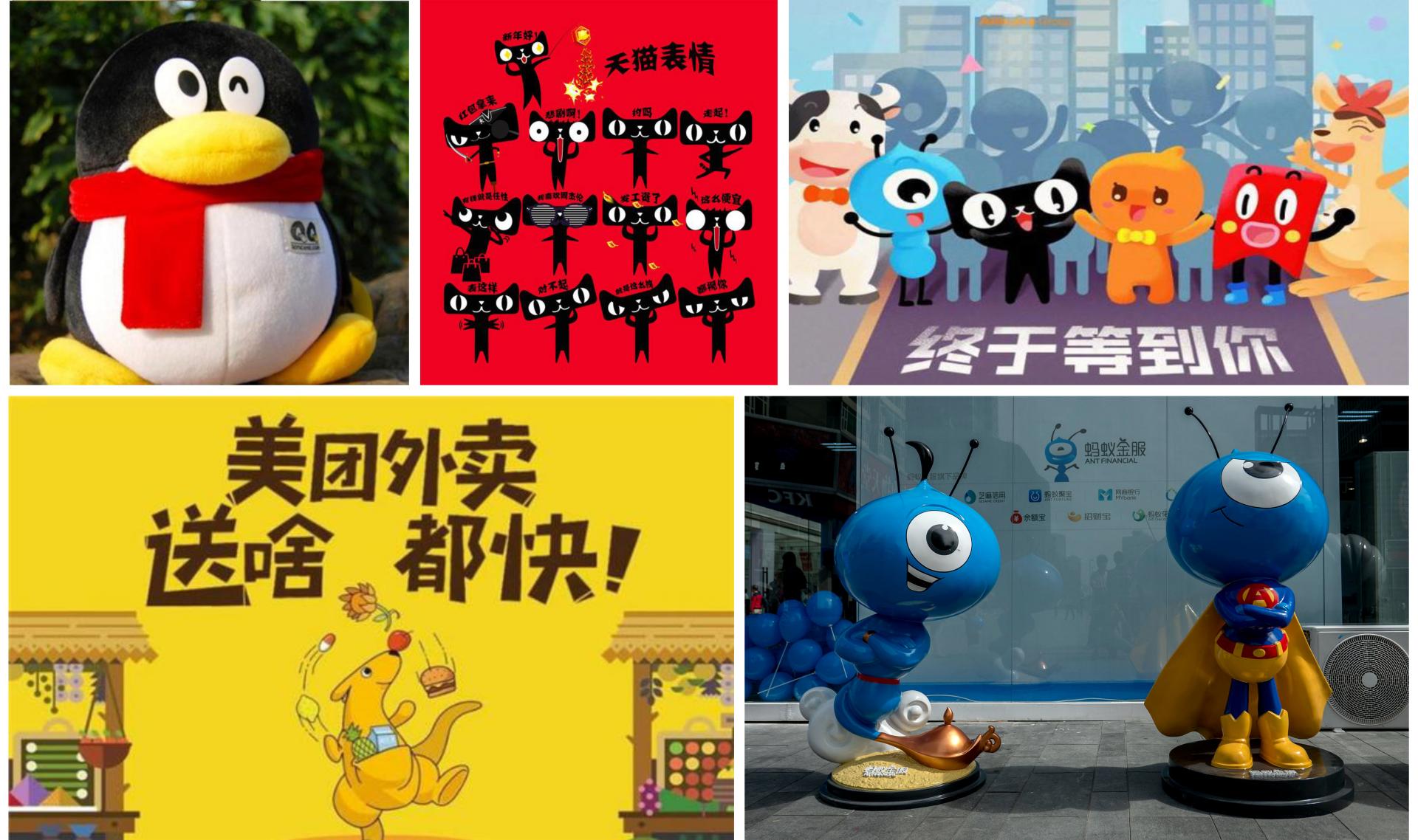
A QQ plush ; TMall Cat different moods ; Group of Chinese tech companies mascots ; Meituan Kangaroo advertisement ; Statues of Ant Financial mascot in different costumes
But all these mascots are packed with meaning and represent the value propositions distinctive to the brand. Meituan’s kangaroo represents the fast-paced delivery and the app’s ability to carry goods in its “pouch”. The Ant of Ant Financials represents, according to the company, the idea that a world made up by small start-ups can succeed in achieving its ambitious dreams by bringing individuals together and driving progress with a hard work ethic and perseverance. This notion is strongly associated with the work ethic and collaborative nature of ants. Last but not least, QQ penguin was originally intended to be a pigeon, eluding to the use of pigeons as a useful message delivery tool during the old times. The founder drew the mascot himself and said it was a pigeon, but everyone else said it looked like a penguin, so the mascot subsequently became a penguin.
It would seem that in order to have a appreciated, recognizable and successful internet-based service company, a mascot is needed, but an animal mascot is a must. But why does animal mascots work particularly well in the case of China?
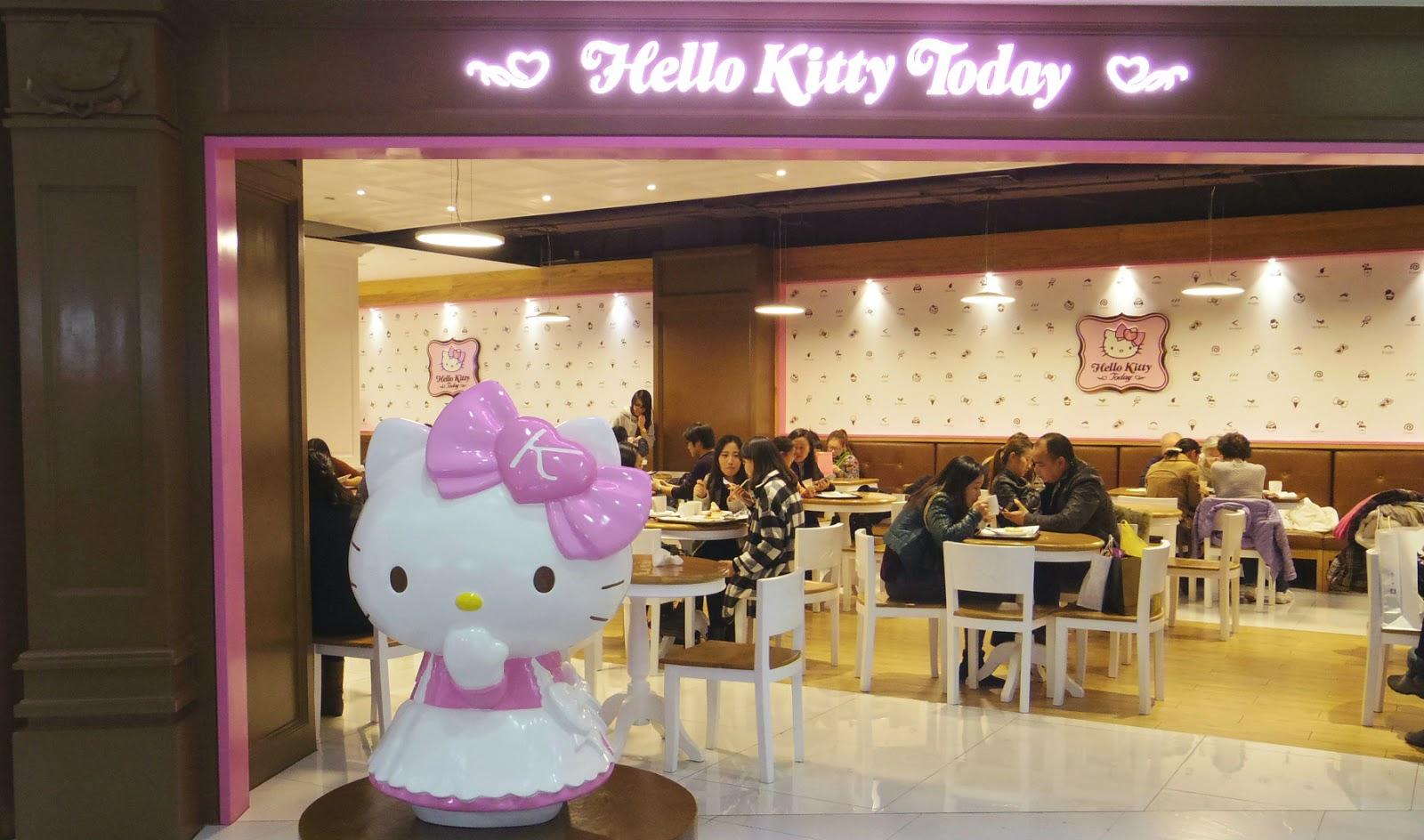
Hello kitty café in Shanghai. Source: Cuteshanghai blogpost
The success of cute animal mascots in China is surely due to something particular true of east Asian culture: The “Culture of Cute” or “Kawaii Culture”. While the West likes to emphasize on a cool and grown-up attitude in sex appeal, Asia also considers innocence, youth and a wholesome attitude to be appealing.
The origin of this “Kawaii culture” comes from Japan. Sharon Kinsella, a lecturer in Japanese visual culture at the University of Manchester and a PhD graduate from Oxford University explains the cultural phenomenon in the following terms: “Most of the Japanese think adulthood is a period of hard work. The most impression of […] adulthood is that it involves responsibility, which is not just an individual responsibility, but specific, responsibility to […] society, to one’s family. Cute culture [is] therefore a kind of […] rebellion or refusal to operate with establish[ed] social values and realities.”
This also applies to the younger Chinese population. In China, people are burdened with the idea that they must climb the social ladder to be successful and get rich. They would then need to settle with a family and later in life take care of their elderly parents. The “Kawaii culture” has helped people “escape” these rigid social expectations to a certain extent. Hence the existence of the “Culture of Cute” can explain why animal mascots are especially appreciated in the Chinese market.
An added benefit is that mascots can become a revenue source for companies. Just like the sport leagues, retail merchandise related to the mascots can become attractions themselves. A good example of this is Line, a popular Korean messaging app. Since the app introduced Line exclusive characters “stickers” or mini-animation into their messaging system, the characters became so popular it formed its own brand and now sell related merchandise in their own retail stores all around the world. Moreover, the horizontal expansion stemming from the power of this IP also include cafes and even theme parks. Not only does the company make money, but they also turn their customers into their own brand ambassadors, a double win for the brand.
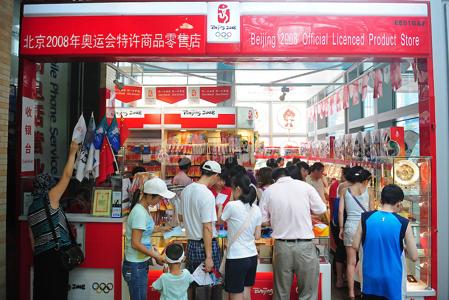
LINE friends iPhone cases and the 3 story outlet in Seoul dedicated to LINE friends goods. Source: Danielfooddiary
When it comes to choosing an appropriate mascot for your brand, it is important to consider what you want to express to your target consumers. As a tool, mascots can create a unique emotional connection with audience that’s hard to replicate. If lucky, a mascot can become a selling point on its own and become the central driver of brand awareness. A mascot can also bring flair and personality to your brand, becoming a point of differentiation separating you from the others, especially when the industry at hand is traditionally seen as dull. In China, adapting a company mascot into your marketing campaign can be particularly effective due to the East’s embracement of the “cute” aesthetics as a normal standard of beauty. An important point to consider is to evaluate how your brand is being perceived by consumers and whether a mascot can help you deliver your company’s distinct values, culture and personality.
A Labbrand Group Company © 2005-2024 Labbrand All rights reserved
沪ICP备17001253号-3* Will be used in accordance with our Privacy Policy
To improve your experience, we use cookies to provide social media features, offer you content that targets your particular interests, and analyse the performance of our advertising campaigns. By clicking on “Accept” you consent to all cookies. You also have the option to click “Reject” to limit the use of certain types of cookies. Please be aware that rejecting cookies may affect your website browsing experience and limit the use of some personalised features.